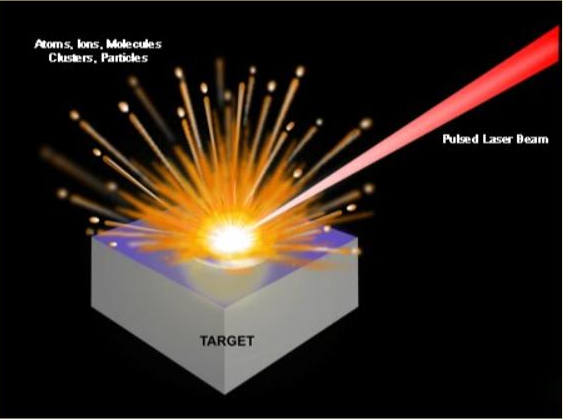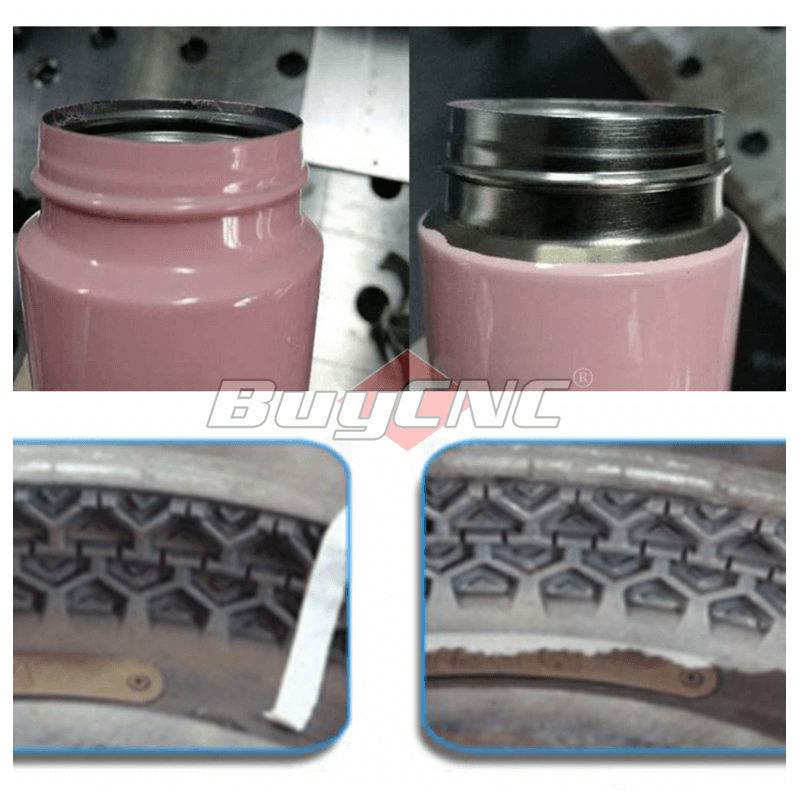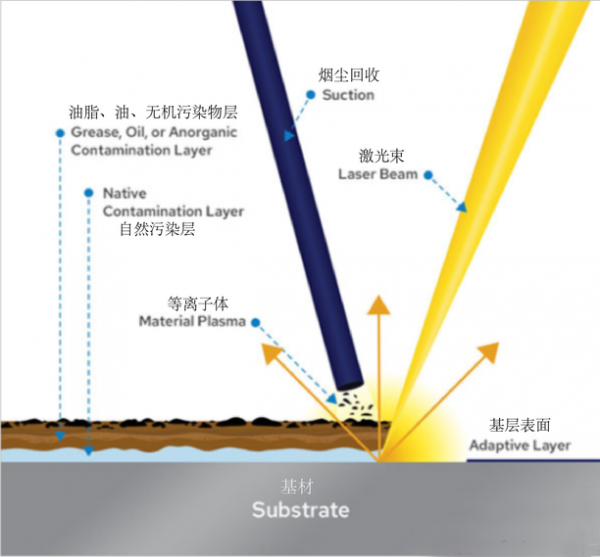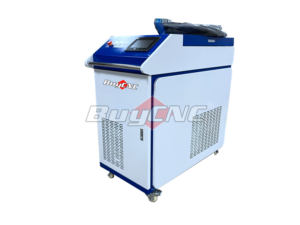Table of Contents
The Principle of Laser Cleaning
Laser cleaning is a laser application technology, which has been widely used in industry, biology, medicine, military and other fields. The scientific name of laser cleaning is laser ablation. Laser ablation or light ablation is the process of removing materials from the surface of solid (or sometimes liquid) by irradiating with a laser beam. At low laser flux, the material is heated and evaporated or sublimated by the absorbed laser energy. At high laser flux, materials are usually converted to plasma. Generally, laser ablation refers to the removal of materials with a pulsed laser, but if the laser intensity is high enough, the materials can be ablated with a continuous wave laser beam. Deep UV excimer lasers are mainly used for optical ablation. The laser wavelength used for optical ablation is about 200 nm.

Several Major Industries of Laser Cleaning
Military
Laser guns often appear in movies. It is laser ablation that transfers momentum to the surface, which is similar to hitting the surface with a hammer. Because the ablated material will apply a high-voltage pulse to its lower surface when it expands. This process is used to harden the metal surface in industry, so the principle of laser cleaning has been applied in the military field
Medical Care
When it comes to laser cleaning, many people will think of tattoo cleaning. It uses CO2 or nd:yag pulsed laser to clean the surface, remove pigmentation, improve the appearance of scar tissue (which cannot be cured), and restructure the outer layer of the skin without damaging the outer layer below. In fact, it is used in a variety of medical specialties, including ophthalmology, general surgery, neurosurgery, otorhinolaryngology, dentistry, oral and maxillofacial surgery, and veterinary medicine. Laser scalpels are used to ablate hard and soft tissues. Some of the most common medical applications using laser ablation include LASIK, skin resurfacing, cavity preparation, biopsy, and tumor and lesion removal. In soft tissue surgery, CO2 laser beam is ablated and burned at the same time, making it the most practical and common soft tissue laser. There are several types of lasers used in medicine, including argon, carbon dioxide (CO2), dyes, excimer, nd:yag, etc.
Laser cleaning can be used for benign and malignant lesions of various organs, which is called laser-induced interstitial hyperthermia. At present, the main applications include reducing benign thyroid nodules. It can also be used to treat chronic venous insufficiency and other diseases.

Metal Rust And Paint cleaning
The general method of steel cleaning in China is acid pickling, which seriously pollutes the environment. Laser cleaning is in the state of research and development in this aspect. If it is successful, it will be a technological revolution.
Laser cleaning technology refers to a cleaning method that uses high-frequency and high-energy laser pulses to irradiate the metal surface, and the coating layer can instantly absorb the focused laser energy, so that the oil stain, rust spot or coating on the surface can evaporate or peel off instantly, and the surface attachment or surface coating can be removed effectively at a high speed. The laser pulse with a short action time will not damage the metal substrate under appropriate parameters.
Laser cleaning is a new technology based on the interaction effect between laser and substances. Different from the traditional mechanical cleaning method, chemical cleaning method and ultrasonic cleaning method (wet cleaning process), it does not need any CFC organic solvent that destroys the ozone layer. It is pollution-free, noise-free, harmless to human body and the environment. It is a “green” cleaning technology, which improves the speed and quality of metal cleaning.

Cleaning of Tire Mold And Other Molds:
Every year, hundreds of millions of tires are manufactured by tire manufacturers all over the world. The cleaning of tire molds in the production process must be rapid and reliable to save downtime. Traditional cleaning methods include sand blasting, ultrasonic or carbon dioxide cleaning, but these methods usually have to be moved to the cleaning equipment for cleaning after the high heat mold is cooled for several hours.
The cleaning takes a long time and is easy to damage the accuracy of the mold. Chemical solvents and noise will also produce safety and environmental protection problems. Using the laser cleaning method, because the laser can be transmitted by optical fiber, it is very flexible in use; Because the laser cleaning method can be connected with optical fiber to guide the light to the dead corner of the mold or the part that is not easy to remove for cleaning, it is convenient to use; Since the rubber is not gasified, it will not produce toxic gases, which will affect the safety of the working environment.
The technology of laser cleaning tire mold has been widely used in the tire industry in Europe and the United States. Although the initial investment cost is high, the benefits obtained in saving standby time, avoiding mold damage, working safety and saving raw materials can be quickly recovered. According to the cleaning test carried out by the laser cleaning equipment on the production line of the tire company, it can clean a set of large truck tire molds online in only 2 hours. Compared with conventional cleaning methods, the economic benefits are obvious.
The anti sticking elastic film on the mold of the food industry needs to be replaced regularly to ensure hygiene. Laser cleaning without chemical reagents is also particularly suitable for this application.

Advantages of Laser Cleaning
Compared with traditional cleaning methods such as mechanical friction cleaning, chemical corrosion cleaning, strong impact cleaning of liquid and solid, high-frequency ultrasonic cleaning, laser cleaning has obvious advantages.
1. Laser cleaning is a “green” cleaning method, which does not need to use any chemical agents and cleaning fluids. The waste materials cleaned are basically solid powder, small in size, easy to store, recyclable, and can easily solve the environmental pollution problems caused by chemical cleaning;
2. The traditional cleaning method is often contact cleaning, which has mechanical force on the surface of the cleaned object, damages the surface of the object or the cleaning medium is attached to the surface of the cleaned object, which cannot be removed and produces secondary pollution. The non grinding and non-contact of laser cleaning make these problems solved easily;
3. The laser can be transmitted through optical fiber and cooperate with robot hands and robots to facilitate long-distance operation and clean parts that are difficult to reach by traditional methods, which can ensure the safety of personnel in some dangerous places;
4. Laser cleaning can remove various types of pollutants on the surface of various materials, reaching a cleanliness that conventional cleaning cannot achieve. It can also selectively clean the pollutants on the material surface without damaging the material surface;
5. Laser cleaning is efficient and saves time;
6. Although the one-time investment in the purchase of laser cleaning system is high in the early stage, the cleaning system can be used stably for a long time, with low operation cost and only electricity charge per hour.
Simply put, it is especially suitable for metals, ceramics, rubber for tires, etc. with low cost and good effect.

Laser Cleaning Machine For Sale


